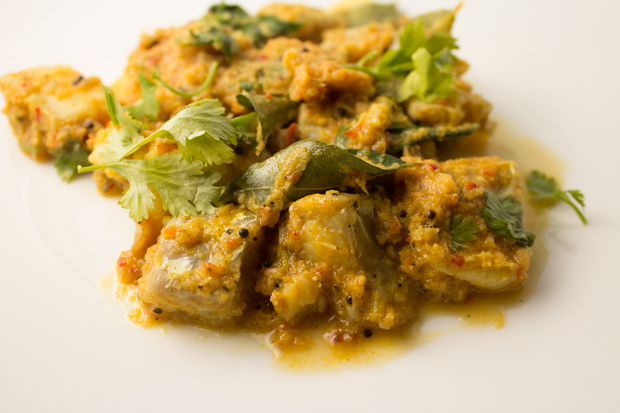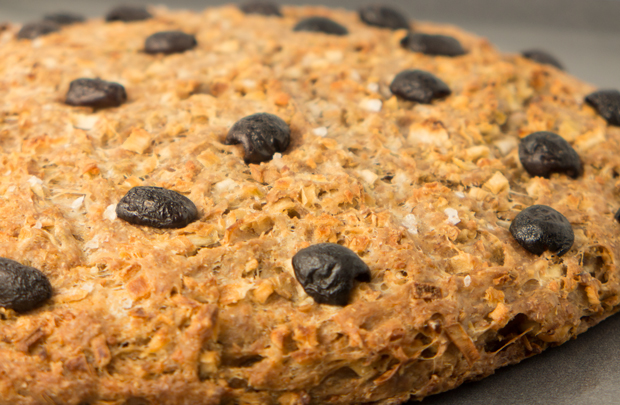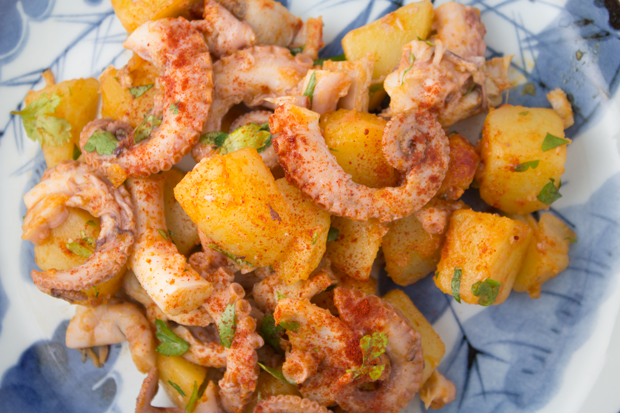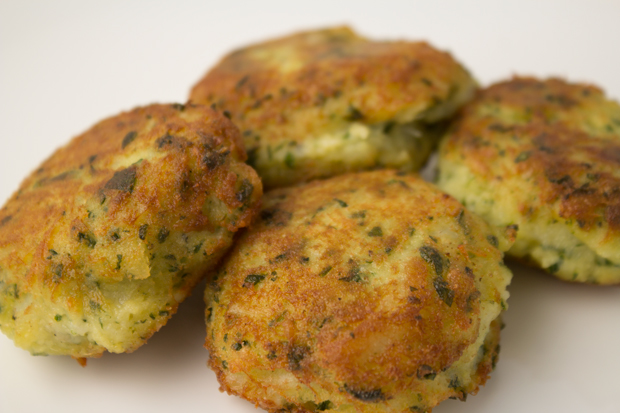posted by
Samar on
September 6, 2015

All kids have heroes and role models they want to grow up to become: Superman, astronauts, spies and the like. Mine was probably David Attenborough, whose BBC nature documentaries, notable “Life on Earth” had me in thrall and glued in front of a TV for much of my youth. (We’ll pass over my less-than-healthy addiction to cartoons.) I couldn’t believe one could get paid for traipsing around the wild discovering new flora and fauna. Such was his influence that I eventually ended up pursuing a highly unlikely (given my mediocre grades in school) academic career in a related field. It is saying something then that I think of Rick Stein as the culinary equivalent of David Attenborough, not only in how his various BBC series hold me in thrall, but also in his very academic style of presenting (food TV that both educates and entertains). And, just like his predecessor, he has had a massive impact on me, this time on my culinary interests.
posted by
Samar on
August 23, 2015

I grew up eating fennel seeds in India where they serve as both an after-meal mouth freshener and digestive. The seeds are also occasionally used as a spice, for example in the Bengali spice mix known as panch phoron (literally “five spices”). But fennel, the vegetable, is a relatively new addition to my kitchen and it has quickly risen to the top of my list of ingredients to eat. Until recently though I tended to eat it raw, typically in salads, but a trip to Greece opened up a world of new and delicious possibilities such as marathopita, a pie made from wild fennel. Alas in the UK it is difficult to even buy fennel bulbs with their fronds still attached, let alone wild fennel! So last week, when browsing in the cookbook section of the Oxfordshire library I came across a recipe for fennel bread that could be made with seeds, I couldn’t wait to try it. The results didn’t disappoint!
posted by
Samar on
August 2, 2015
You only have to spend a few hours in South Korea to realize how important kimchi is to that nation’s identity. No meal–from breakfast on–is complete without some form of this fermented dish. It comes as a surprise then, as the New York Times reported recently, that there is a kimchi crisis of sorts in Korea. In brief, as in many other industries cheaper Chinese goods have completely overwhelmed local producers, many mom-and-pop outfits selling their homemade kimchi in local street markets (as in the NY Times video above). What is more, the trade is entirely in one direction: while China exports over $100 million-worth of kimchi to South Korea, it only imports a minuscule $16,000 from the country of it’s origin! This is because China classifies kimchi as a pickled good which, because of the high bacterial content, violates it’s hygiene standards. Moreover, most of the basic ingredients that go into kimchi, from the red chile pepper known as gochugaru to garlic and even cabbage, come from China. Adding to the crisis is South Korea’s rapid industrialization–known as the ‘miracle on the Han River’–as a result of which few young people have the time or interest to make their own kimchi. Even if China opens up its market to Korean kimchi the loss of tradition and knowledge may prove irreversible.
posted by
Samar on
July 24, 2015

It is a sign of my changing culinary interests that on a recent extended trip to Seoul it only took a few days after my arrival before I stated craving Spanish food. Not that I wasn’t enjoying the fantastic Korean food on offer. But as long-time readers of this blog will have noticed my tastes have recently veered toward the Mediterranean and I did miss the ready access to those ingredients that one takes for granted in Europe. Sure, if you look hard enough you’ll find most foreign foods in Seoul. But they tend to be eye-wateringly expensive and I wasn’t about to risk bankruptcy for a bacalao fix! And then it occurred to me: Seafood is usually plentiful and excellent here so why not make pulpo de gallega? And as luck would have it, I’d had the foresight to bring along a small bag of the all-essential pimenton!
posted by
Samar on
June 28, 2015

There was a fantastic article recently in the Financial Times about Barcelona’s famous markets. Having spent many hours exploring these mercats on my visits to that city I already knew of the incredible variety and quality of charcuterie and seafood available there. What I didn’t know was the scale of the system and it’s importance to the city’s economy and identity. Barcelona’s 40 markets, which attract 62 million visitors each year, have an annual turnover of almost a billion euros and are an intrinsic part of the communities–not to mention the many world famous restaurants in Catalunya–they serve. Today’s recipe for buñuelos de bacalao (bunyols de bacalla in Catalan) is thus quite fitting as my interest in Spanish cuisine began with a visit to La Boqueria, the best known of Barcelona’s markets, and the first thing I ate there–within a minute of entering the market!–were these incredible salt cod fritters.







